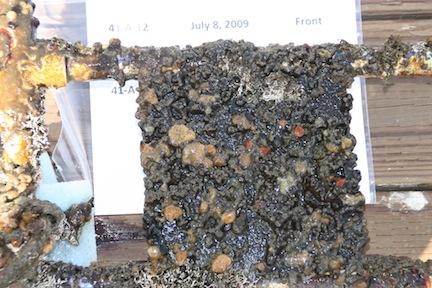A growing body of science is finding that many fouling species can tolerate copper antifouling paints. Although many boat owners know they must clean copper hull paints, the extent of copper tolerance reported by scientists is surprising.
Some invasive fouling species, and even some native species, can attach directly onto copper antifouling paint and can also dominate in copper polluted environments. This has implications for the effectiveness of copper antifouling paints, but also for the importance of having a clean harbor or bay.
Copper-tolerant species also provide an opportunity for other, less-tolerant species to hitchhike on a hull coated with copper antifouling paint. The science shows that copper-sensitive species can attach, grow and be carried within the folds and crevices of more tolerant species.
Copper-based paint is the dominant antifouling strategy. Yet, copper tolerance studies make it clear that antifouling paint, or “chemical control,” may not be able to do the job, alone. They support the need for an integrated approach (see May 23, 2011 blog post “Integrating Hull Fouling Controls – IPM for Boats!”).
An in-depth discussion of the science behind copper tolerance can be found in our fact sheet “Hull Fouling and Copper Tolerance – 2011 Scientific Review.” You can access it on the Nontoxic Antifouling Strategies page of our website.
The photo below shows 12 months growth on copper antifouling paint in San Diego Bay - from our field research.
Attached Images:
